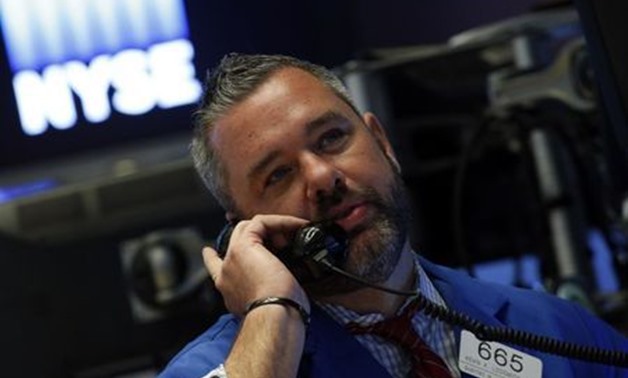
A trader works on the floor of the New York Stock Exchange (NYSE) in New York, U.S., September 21, 2017. REUTERS/Brendan McDermid
NEW YORK - 22 September 2017: The U.S. Treasury yield curve flattened to a two-and-a-half month low and world stock markets fell on Thursday as investors adjusted to indications from the U.S. Federal Reserve that it may raise interest rates a third time this year.
Lingering worries over North Korea added to the weaker tone in U.S. stocks, with U.S. President Donald Trump ordering new sanctions.
The Fed, as expected, also laid out plans to begin the unwinding of a decade of aggressive monetary stimulus, but took a more-hawkish-than-expected stance at this week’s meeting.
According to a Reuters poll late Wednesday of Wall Street’s top banks, the Fed will resume rate hikes in December and in 2018 raise borrowing costs three more times.
“The meeting was definitely more hawkish than what the market was anticipating,” said Mary Ann Hurley, vice president in fixed income trading at D.A. Davidson in Seattle.
“We were definitely not pricing in another rate hike for this year,” she said.
In Asia, the Bank of Japan kept its monetary spigots open. Investors have been trying to figure out what may happen to the European Central Bank money-printing program, with policymakers disagreeing on whether to set a definitive end date.
The yield curve between Treasury five-year notes and 30-year bonds US5US30=TWEB flattened to 92 basis points on Thursday, the lowest level since July 6. Intermediate-dated debt is more sensitive than longer-dated bonds to interest rate increases.
MSCI’s gauge of stocks across the globe .MIWD00000PUS shed 0.41 percent.
The S&P 500 and Dow snapped a run of record closing highs.
Concerns over North Korea may have contributed to the bearish sentiment, said Peter Tuz, president of Chase Investment Counsel in Charlottesville, Virginia. He noted, however, that “we’ve had a pretty good run, and we didn’t have much to keep it going.”
Bank stocks cheered the prospect of higher interest rates, which should help their profits. The S&P bank index .SPXBK was up 0.5 percent, adding to Wednesday’s gains.
The Dow Jones Industrial Average .DJI fell 53.36 points, or 0.24 percent, to end at 22,359.23, the S&P 500 .SPX lost 7.64 points, or 0.30 percent, to 2,500.6 and the Nasdaq Composite .IXIC dropped 33.35 points, or 0.52 percent, to 6,422.69.
Emerging markets shares were lower, with an index of emerging markets .MSCIEF falling 0.4 percent.
S&P Global became the second major rating agency this year to cut China’s credit score, citing worries about the country’s rising debt levels and the risks that poses for financial stability in the world’s second largest economy.
The dollar weakened against a basket of currencies, pulling back from a more-than-two-week peak as bets stoked by the Fed’s signal on rates abated. The dollar index .DXY fell 0.35 percent.
Gold declined to its lowest in almost four weeks as investors continued to assess the Fed statement. Spot gold XAU= dropped 0.8 percent to $1,291.01 an ounce.
U.S. oil prices were down slightly before a meeting of oil producers that could extend production limits.
U.S. crude CLcv1 dipped 14 cents, or 0.3 percent, to settle at $50.55 a barrel, while Brent LCOcv1 rose 14 cents, or 0.3 percent, to settle at $56.43 a barrel.


Comments
Leave a Comment